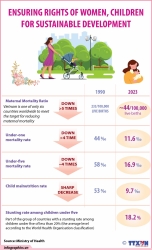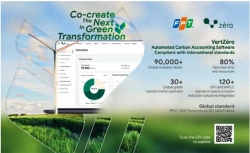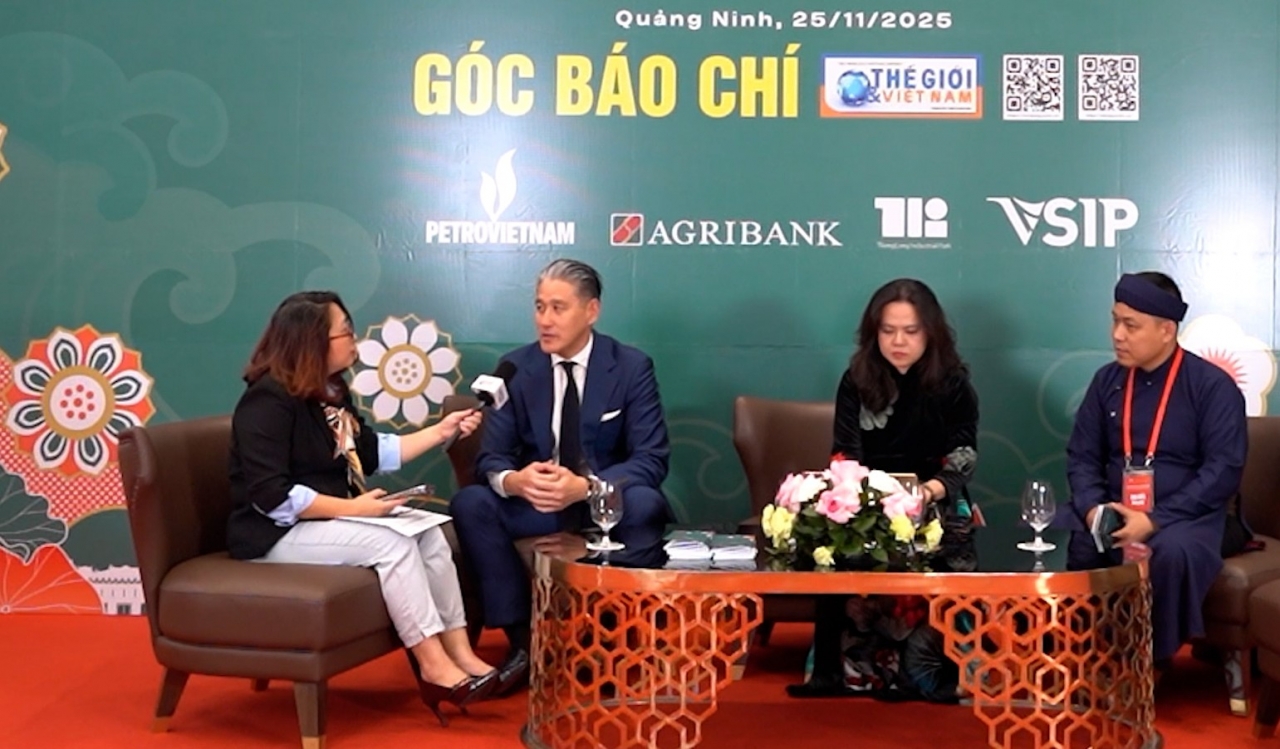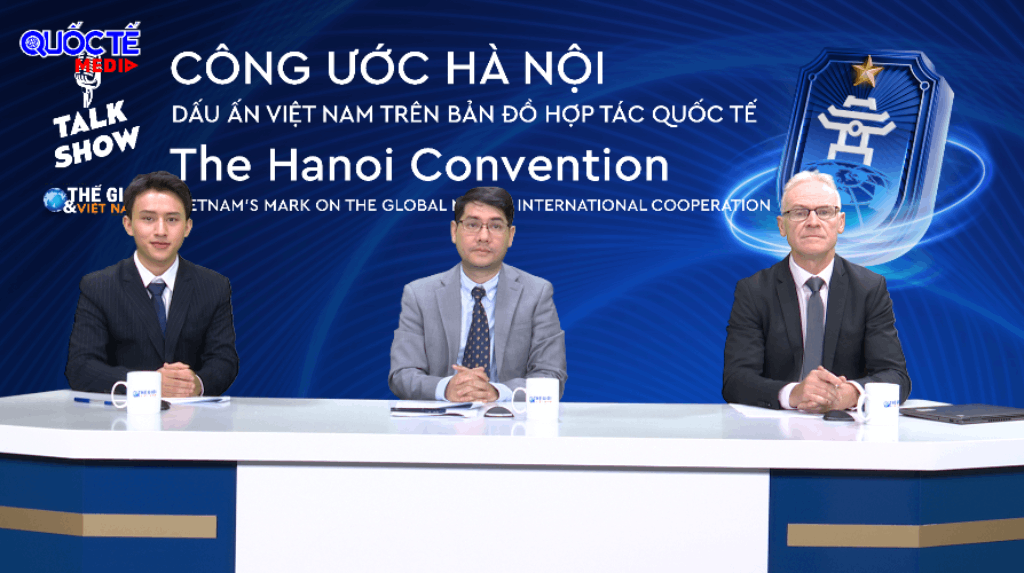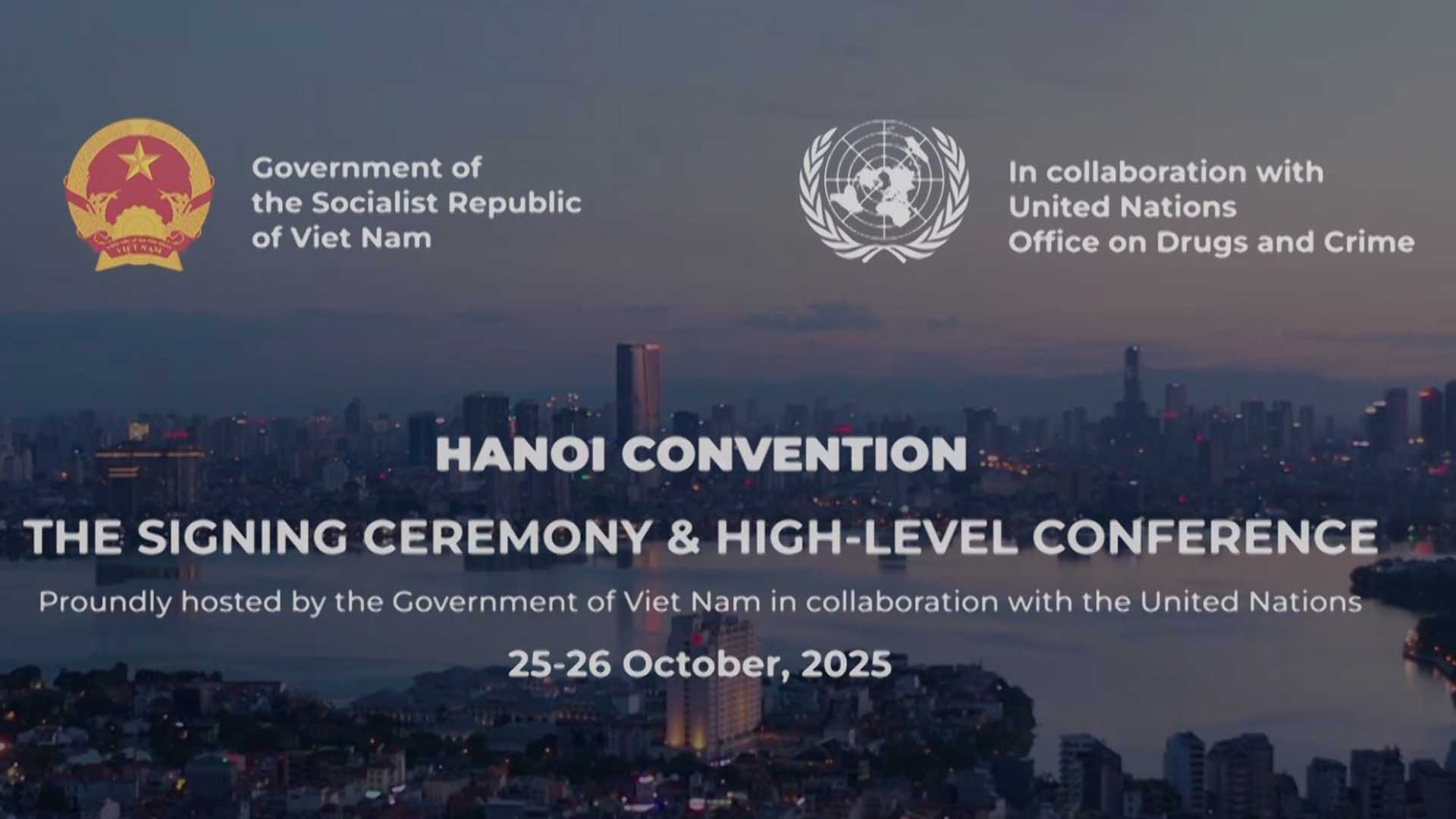
A driving force for sustainable development
Latest
At this historic juncture, as Vietnam prepares for crucial steps toward a new era of development, General Secretary To Lam has consistently emphasized that the ultimate goal of streamlining and reorganizing the apparatus is to create new drivers and enhance efficiency for socio-economic development, improve the material and spiritual well-being of the people, and fully promote human rights.
Looking back on nearly 95 years of safeguarding, building, and advancing the nation under the leadership of the Communist Party, it is evident that the implementation of policies on religion and ethnicity has always been among the Party and State’s top priorities. These efforts aim to harness resources for national development while ensuring equality and sustainable progress.
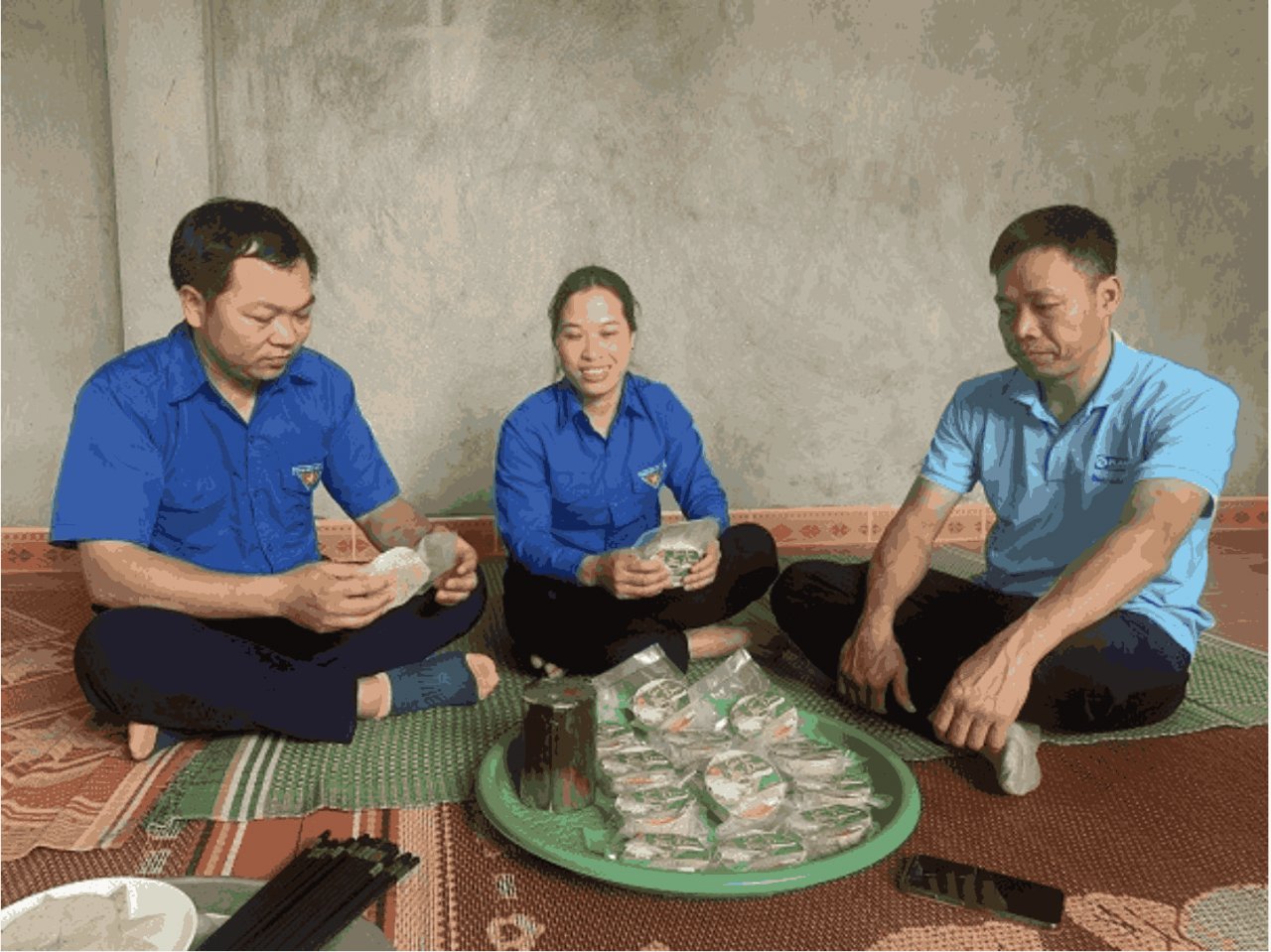 |
| A young ethnic minority woman overcomes poverty in Ha Giang Province. In the photo: Ms. Chang Thi Cham introduces pork sausage products made from her family's black pig meat. (Photo: Le An) |
1. Bridging development gaps and protecting the environment and living spaces of ethnic minority communities have been key focuses. At the National Conference reviewing ethnic affairs in 2024, Permanent Deputy Prime Minister Nguyen Hoa Binh once again affirmed that the Party and State of Vietnam's strategy centers on the comprehensive, rapid, and sustainable development of ethnic minority and mountainous areas. The goal is to tap into the potential and comparative advantages of these regions while safeguarding the environment and living conditions of their communities.
In reality, over the past decade, the Party and State have introduced numerous significant policies regarding ethnic affairs. Notably, Decree No. 05/2011 dated January 14, 2011, established an important legal framework with 12 policy groups covering economic, cultural, social, national defense, and security sectors.
In addition, the Ethnic Affairs Strategy toward 2020 and directives from the Prime Minister further concretized the Party’s resolutions, aiming to enhance state management efficiency and strengthen ethnic affairs amidst the processes of industrialization and modernization, with a vision toward sustainable development for ethnic minority regions.
| More from WVR |
 SOEs development crucial for sustainable development: Prime Minister SOEs development crucial for sustainable development: Prime Minister |
Of particular importance, on November 20, 2018, the 14th National Assembly passed Resolution No. 74/2018/QH14, tasking the Government with developing a Master Plan for socio-economic development investment in ethnic minority and mountainous areas, as well as in regions facing particularly difficult conditions. On October 14, 2021, the Prime Minister signed Decision No. 1719/QĐ-TTg approving the National Target Program for Socio-Economic Development of Ethnic Minority and Mountainous Areas for the 2021–2030 period.
The policies and initiatives of the Party, the State, and the Government have significantly raised awareness and strengthened the responsibilities of Party committees and organizations regarding ethnic affairs, especially in ethnic minority and mountainous regions. The material and spiritual living standards of the people have improved markedly since the country’s renewal period, across key aspects such as housing, clothing, transportation, education, healthcare, and access to communication.
The great national unity bloc has been increasingly consolidated and reinforced, with ethnic groups showing mutual respect, solidarity, and support in building and defending the nation.
According to the latest data from the Committee for Ethnic Minority and Religious Affairs, the economic growth rates of provinces with large ethnic minority populations have been quite high. Specifically, the Northwestern region recorded an average annual growth rate of 8%, the Central Highlands 7.5%, and the Southwestern region 7%.
To date, 98.4% of communes in ethnic minority areas have roads accessible by car to their centers, 96.7% of ethnic minority households have access to the national power grid; 100% of communes have primary and lower secondary schools; 99.7% have preschools and kindergartens; 99.3% have healthcare stations; and nearly 100% have either cultural houses or post and cultural centers.
Agricultural production, in particular, has seen strong growth with the establishment of specialized farming areas and the development of key commercial crops such as coffee, pepper, tea, and rubber. The poverty rate in ethnic minority and mountainous areas has decreased by an average of 3.7% per year nationwide, with some localities achieving a reduction of up to 5% annually.
The issue of illiteracy has been fundamentally eliminated, and the universalization of primary and lower secondary education has been actively promoted. Healthcare services and public health care have seen considerable improvements, with the expansion of medical networks, better equipment, and the strengthening of healthcare personnel. Preventive healthcare systems have also received investment and development, helping raise public awareness about disease prevention and effectively controlling major outbreaks.
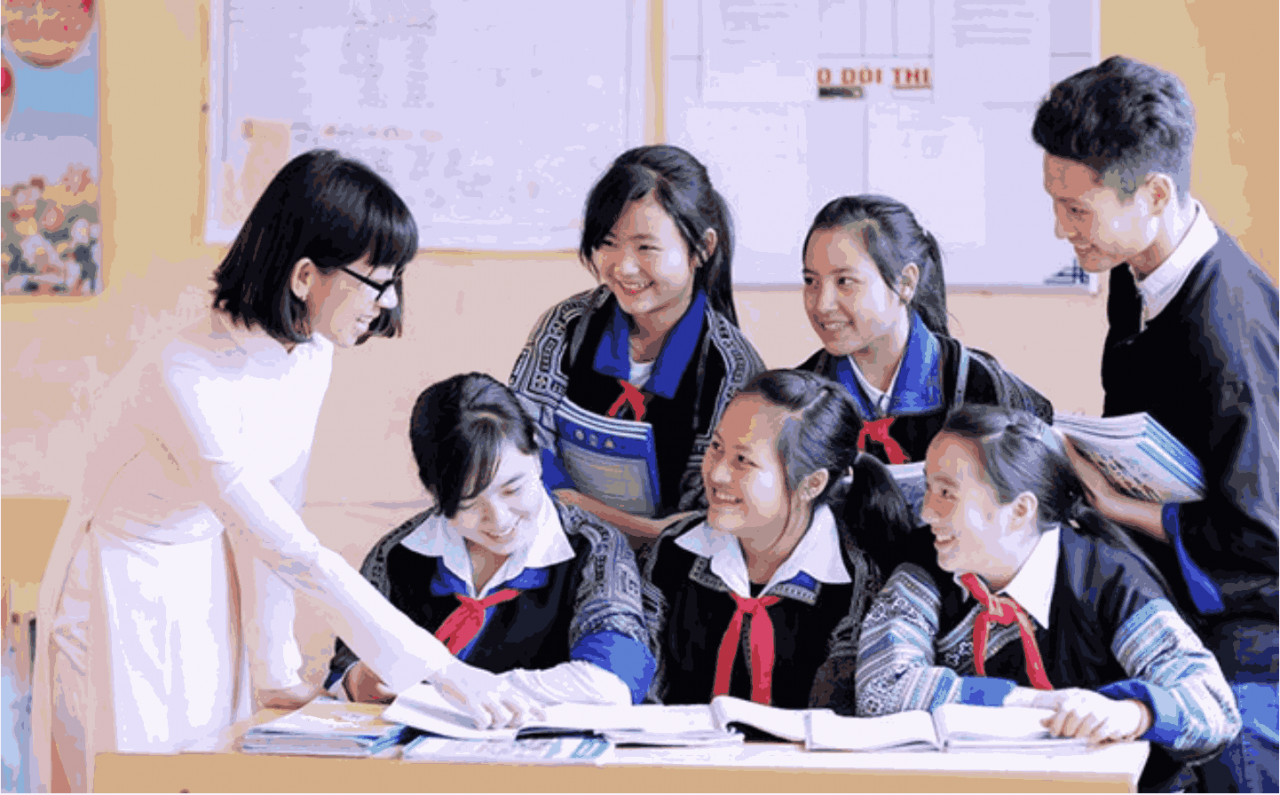 |
| To bring sparkling joy to ethnic minority and mountainous region students as they go to school. (Photo: VGP) |
The cultural heritage of ethnic minority groups continues to be preserved and promoted. Grassroots cultural institutions have been strengthened, in tandem with movements to build a new cultural lifestyle, while investments have been made in broadcasting, television, and communication infrastructure. Several cultural heritages of ethnic minority communities have been recognized by UNESCO as national heritage.
Despite these positive achievements, challenges in the development of ethnic minority and mountainous regions remain. Both central and local authorities have thoroughly acknowledged these issues and are actively seeking solutions to address them. Efforts are being made to ensure long-term, sustainable effectiveness and to guarantee fairness and equality for all groups, with policies being timely adjusted to meet new realities and emerging demands.
2. An open-minded approach to freedom of belief and religion. The right to freedom of belief and religion has been enshrined in all five Constitutions of Vietnam. The 2013 Constitution embodies a humanitarian spirit and aligns more closely with international human rights standards by replacing the term "citizens" with "everyone." This change ensures that not only Vietnamese citizens but also foreigners, stateless individuals, and even those serving prison sentences are entitled to enjoy the right to freedom of belief and religion equally. This adjustment reflects an open-minded perspective and demonstrates Vietnam’s efforts to align with the realities of its deepening integration into the international community.
Cua Bac Church, one of the most beautiful churches in Hanoi, was built at the North Gate of Thang Long Citadel between 1931 and 1932. Over the years, it has become a familiar place of worship for foreigners living, studying, and working in Vietnam. Many come to the church with their families, and young couples often bring their infants along. Their religious life and practices remain unchanged from those in their home countries.
Religious activities of believers—regardless of their faith among the 16 religions officially recognized and registered by the State (including Buddhism, Catholicism, Protestantism, Hoa Hao Buddhism, Cao Dai, Islam, Baha’i, Pure Land Buddhist Association of Vietnam, Seventh-day Adventist Church, Tu An Hieu Nghia Buddhism, Minh Su Dao, Minh Ly Dao – Tam Tong Mieu, Brahmanism, Church of Jesus Christ of Latter-day Saints, Buu Son Ky Huong, and Hieu Nghia Ta Lon Buddhism)—are all respected and protected to ensure security and safety.
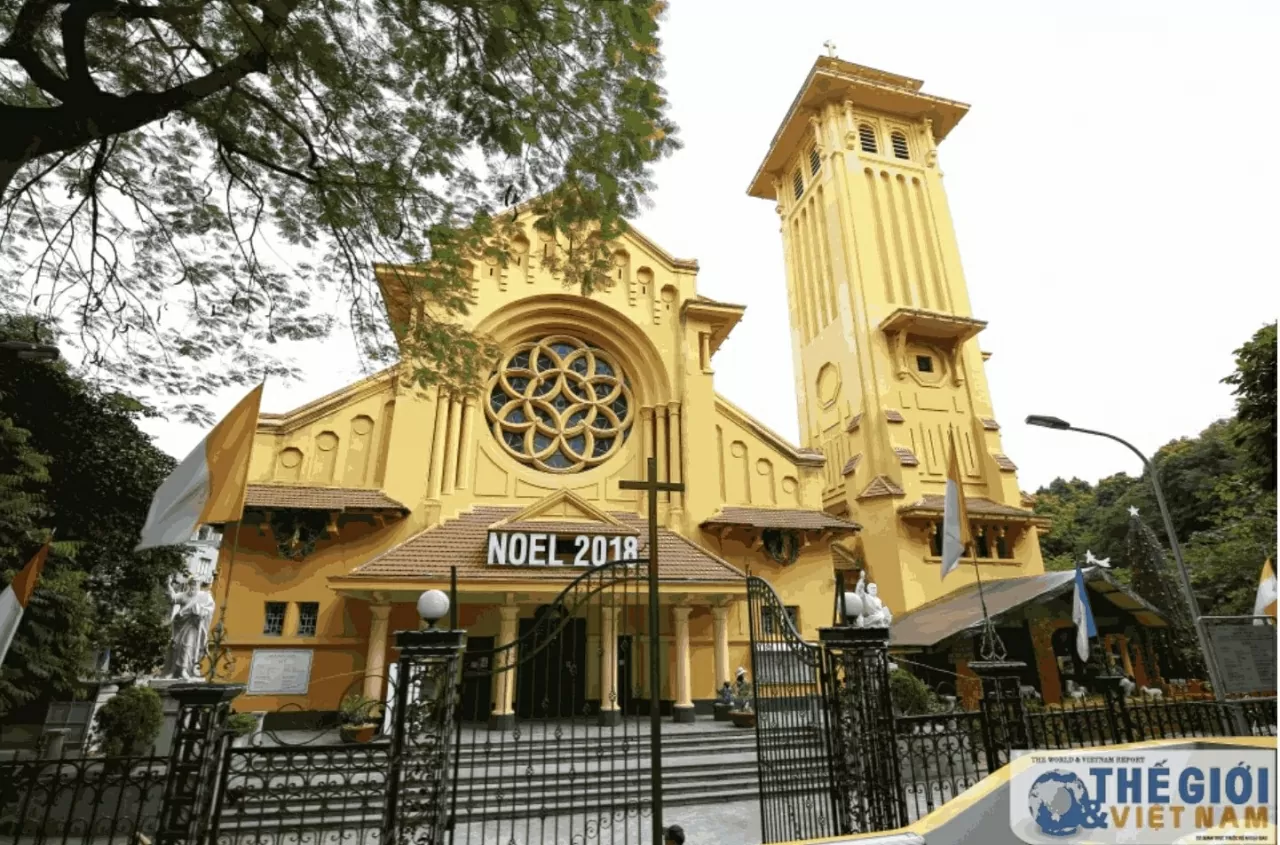 |
| Cua Bac Church on Phan Dinh Phung Street, Hanoi, is a familiar place of worship for foreigners living, studying, and working in Vietnam. (Photo: Trung Hieu) |
As a result, Vietnam has become a welcoming destination and a second home for many foreigners from around the world. As Pastor Bob Roberts, President of the Institute for Global Engagement (IGE, USA), once said: “When my wife and I drove around the streets of Hanoi at night during the Christmas season, we were delighted by the sparkling lights. To me, it felt just like home.”
The protection of human rights, human development, and the formulation of policies to create equal opportunities for all citizens to develop and benefit from the fruits of development have consistently been a guiding principle in the Party’s orientations and the State’s policies and laws. This commitment is both a national and global issue. Among all fundamental human rights, the right to freedom of belief and religion holds a prominent place.
The documents of the 13th National Congress of the Communist Party of Vietnam once again emphasize: “Promote the good cultural and ethical values and the resources of religions for the cause of national development.” This consistent standpoint, upheld by the Party since its founding, affirms that religious followers are an integral part of the great national unity bloc. The cultural and ethical values of religious communities have been, are, and will continue to be awakened and harnessed for the common revolutionary cause, aiming toward the goals of a prosperous people, a strong nation, democracy, justice, and civilization.
From a poor, underdeveloped, and isolated country under embargo, Vietnam has emerged as a developing nation with a middle-income status, deeply integrating into the global political system, economy, and civilization. Vietnam now actively assumes important international responsibilities and promotes its role at many major multilateral organizations and forums.
These achievements are the result of the country’s renewal process, the mobilization of all available resources for development, and the maximization of the strength of great national unity.






